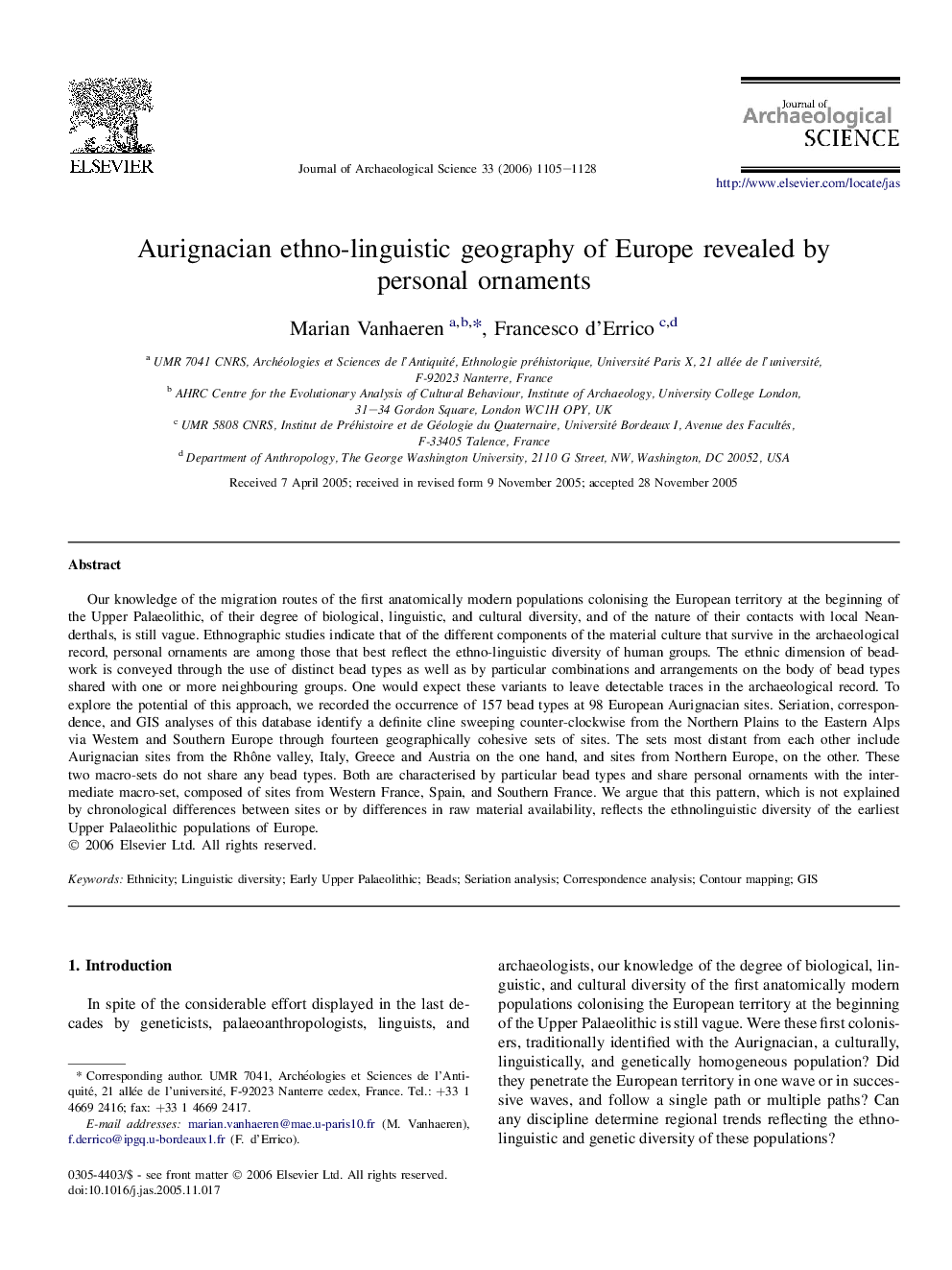| کد مقاله | کد نشریه | سال انتشار | مقاله انگلیسی | نسخه تمام متن |
|---|---|---|---|---|
| 1037509 | 943931 | 2006 | 24 صفحه PDF | دانلود رایگان |

Our knowledge of the migration routes of the first anatomically modern populations colonising the European territory at the beginning of the Upper Palaeolithic, of their degree of biological, linguistic, and cultural diversity, and of the nature of their contacts with local Neanderthals, is still vague. Ethnographic studies indicate that of the different components of the material culture that survive in the archaeological record, personal ornaments are among those that best reflect the ethno-linguistic diversity of human groups. The ethnic dimension of beadwork is conveyed through the use of distinct bead types as well as by particular combinations and arrangements on the body of bead types shared with one or more neighbouring groups. One would expect these variants to leave detectable traces in the archaeological record. To explore the potential of this approach, we recorded the occurrence of 157 bead types at 98 European Aurignacian sites. Seriation, correspondence, and GIS analyses of this database identify a definite cline sweeping counter-clockwise from the Northern Plains to the Eastern Alps via Western and Southern Europe through fourteen geographically cohesive sets of sites. The sets most distant from each other include Aurignacian sites from the Rhône valley, Italy, Greece and Austria on the one hand, and sites from Northern Europe, on the other. These two macro-sets do not share any bead types. Both are characterised by particular bead types and share personal ornaments with the intermediate macro-set, composed of sites from Western France, Spain, and Southern France. We argue that this pattern, which is not explained by chronological differences between sites or by differences in raw material availability, reflects the ethnolinguistic diversity of the earliest Upper Palaeolithic populations of Europe.
Journal: Journal of Archaeological Science - Volume 33, Issue 8, August 2006, Pages 1105–1128